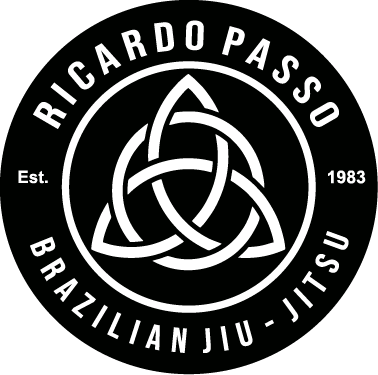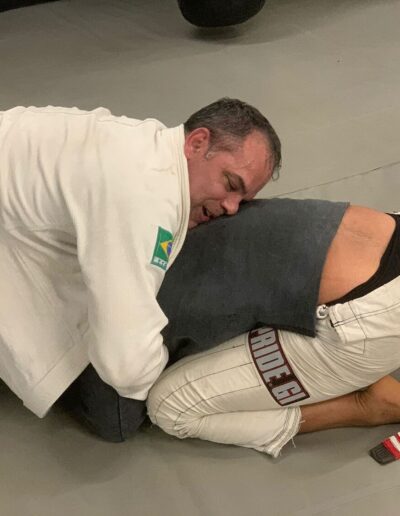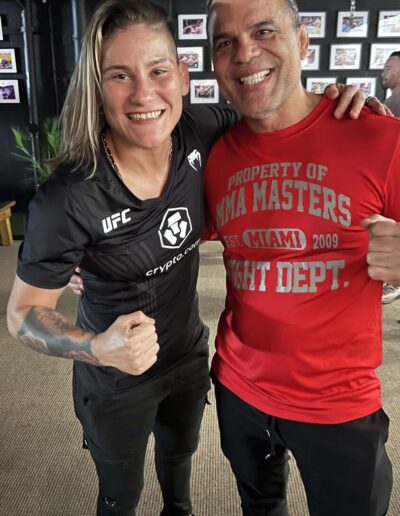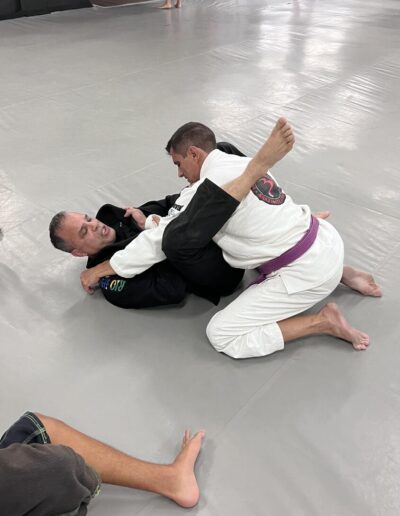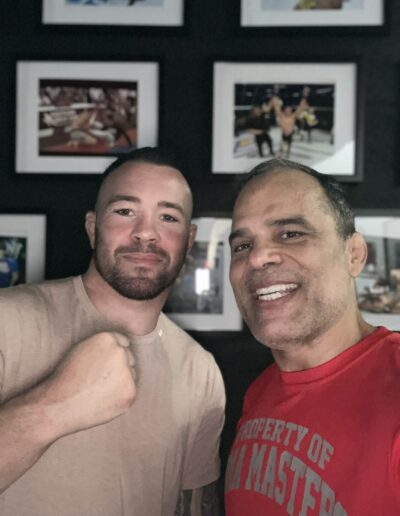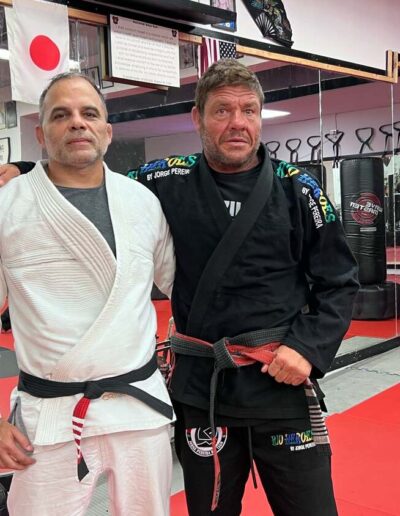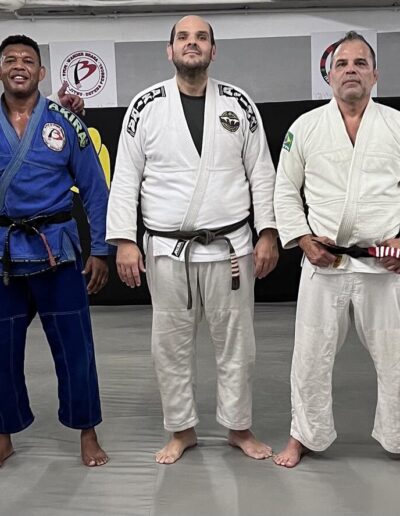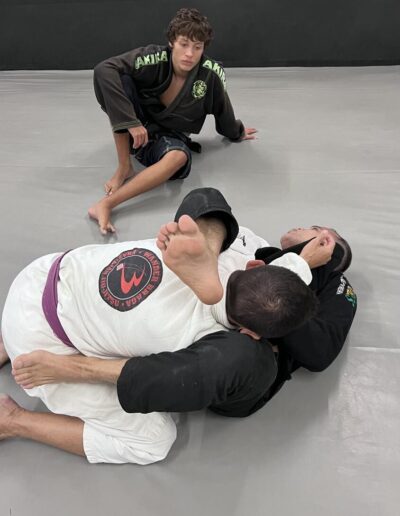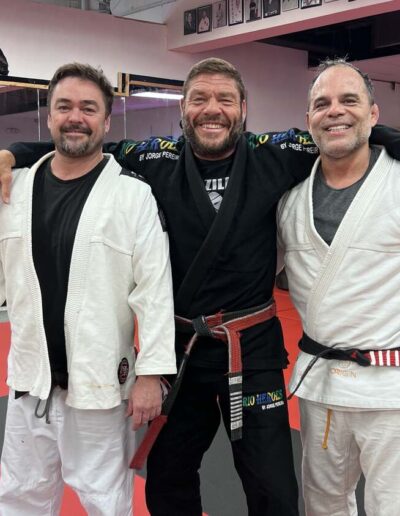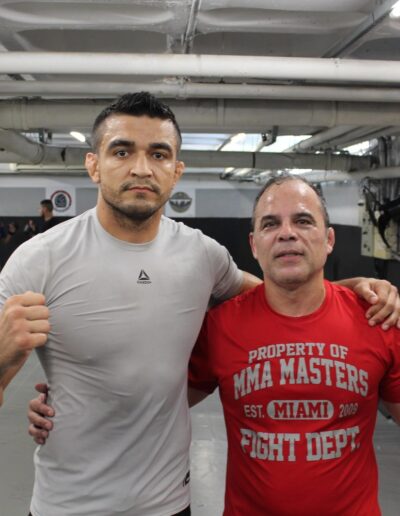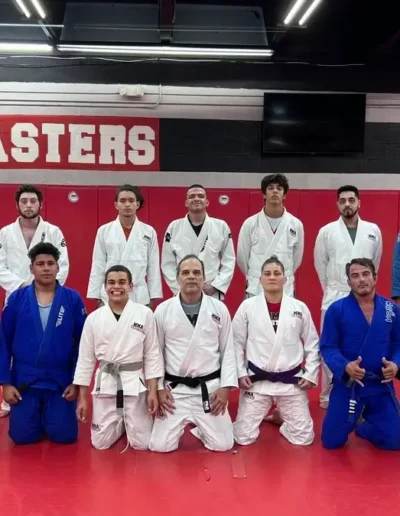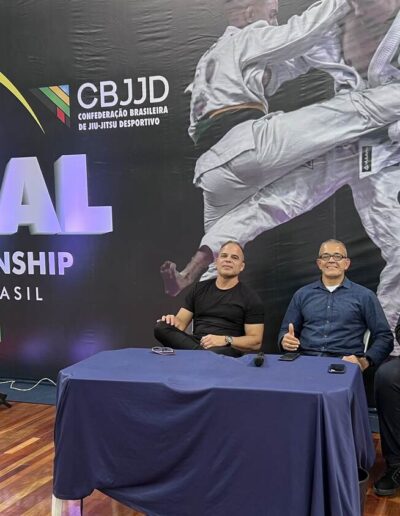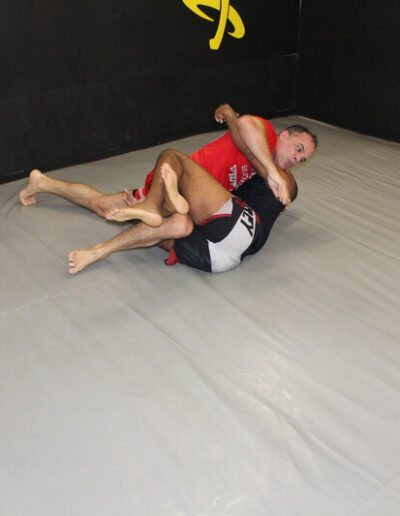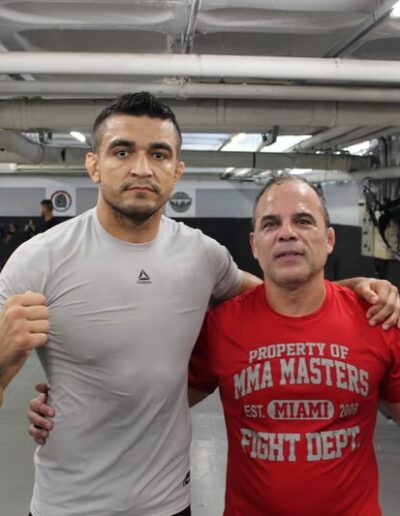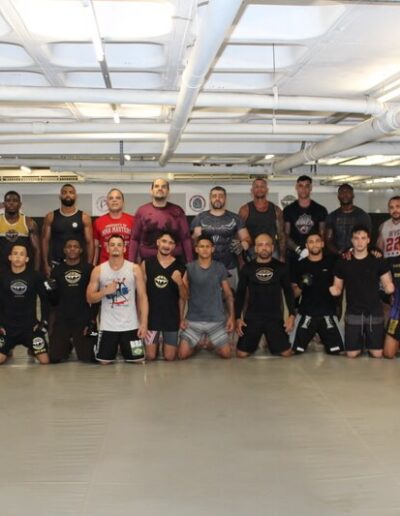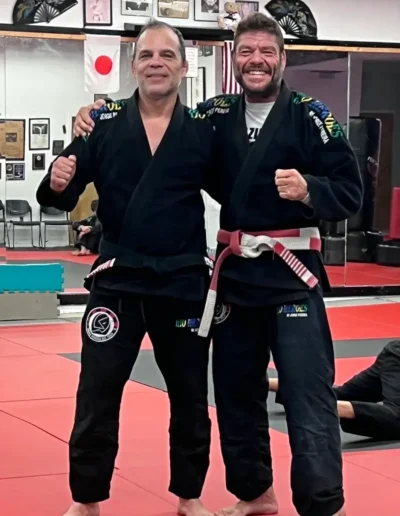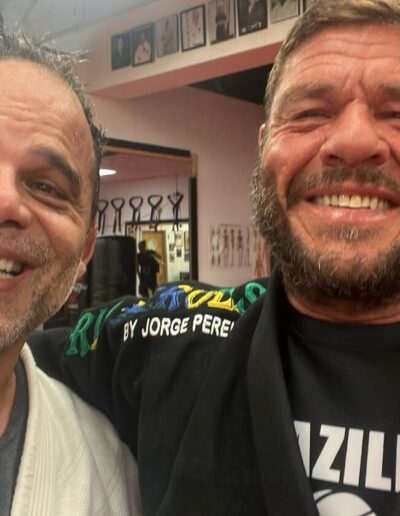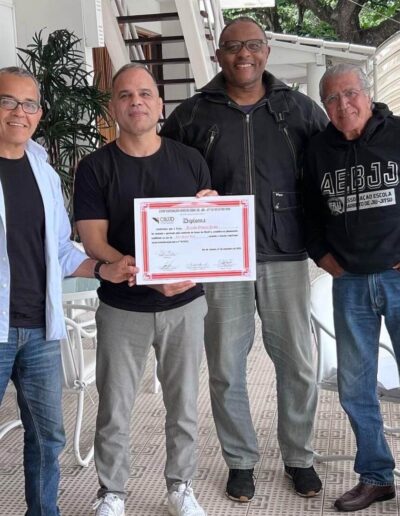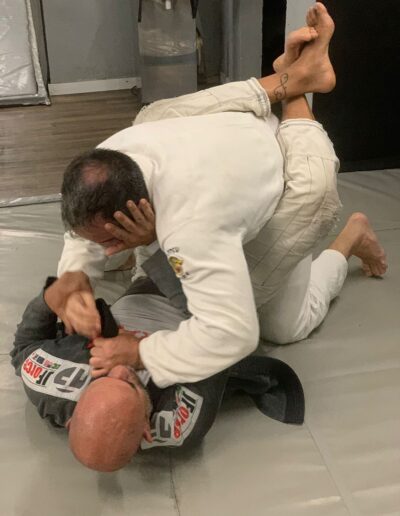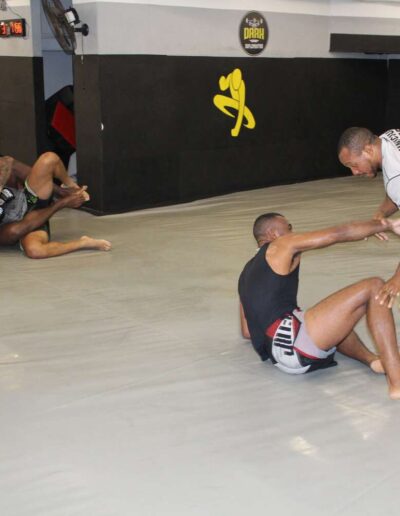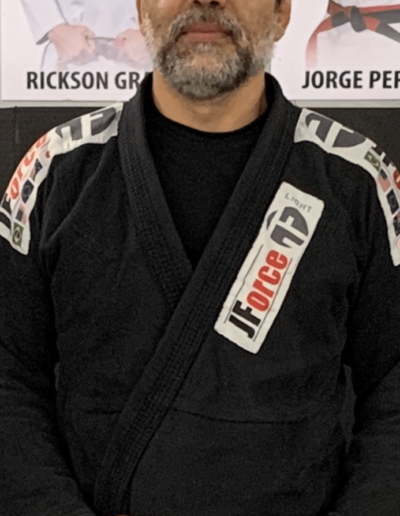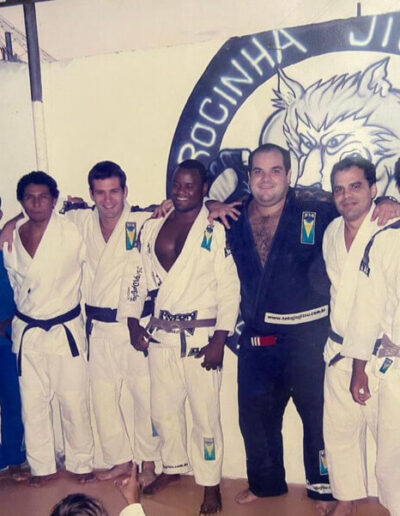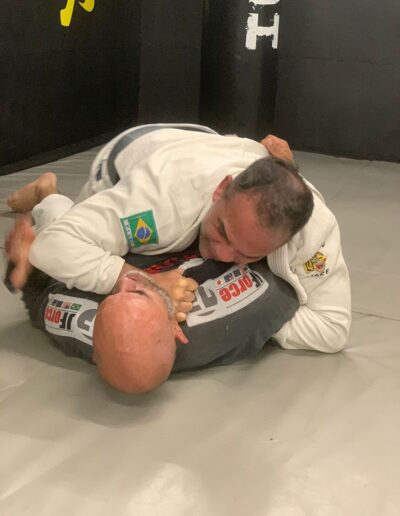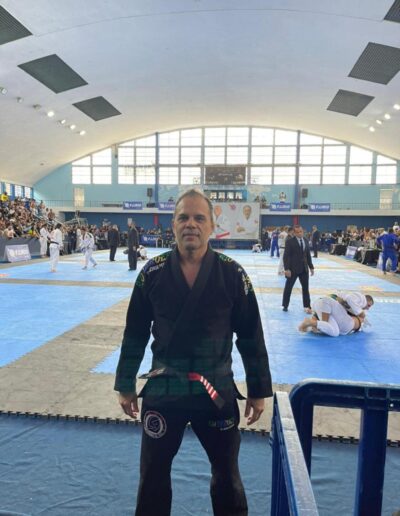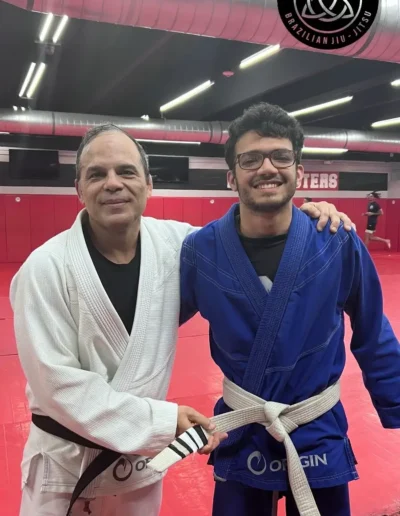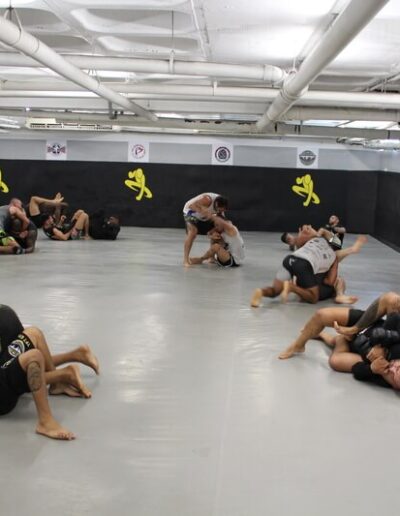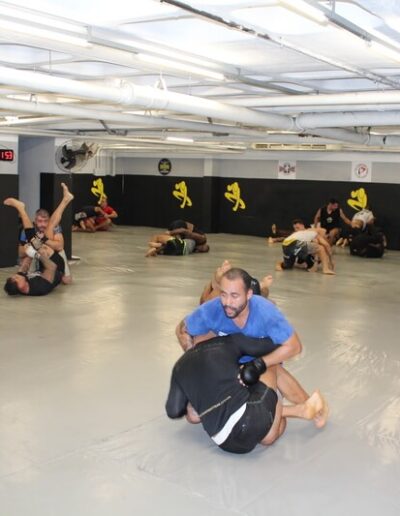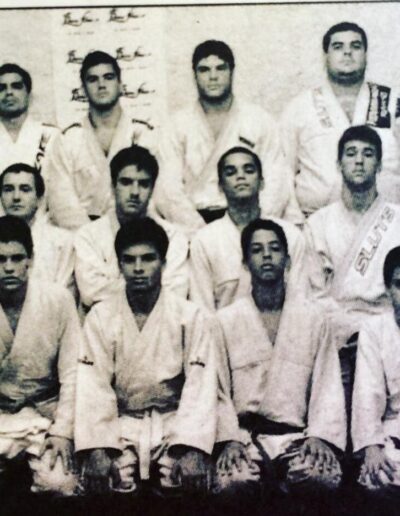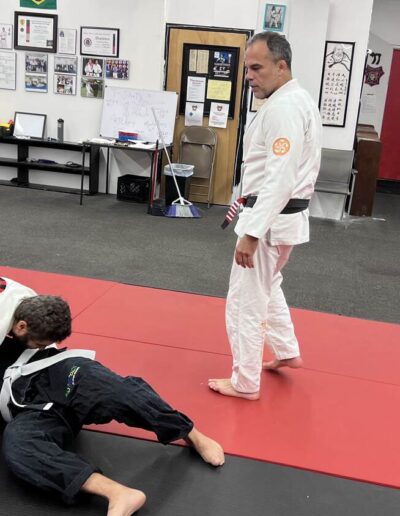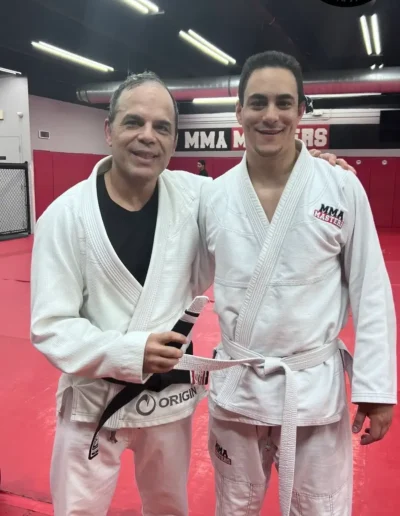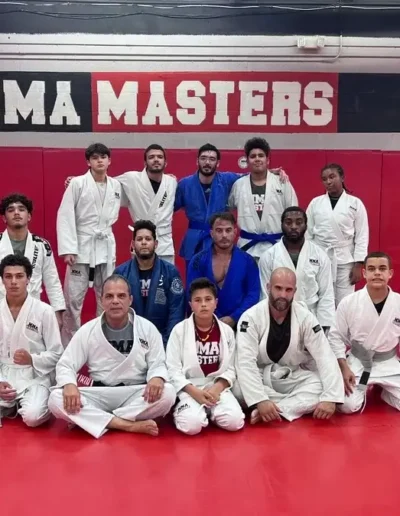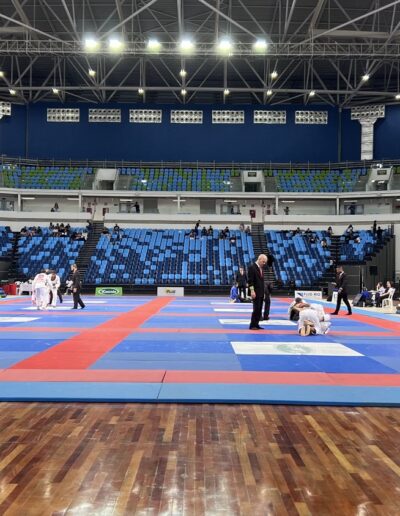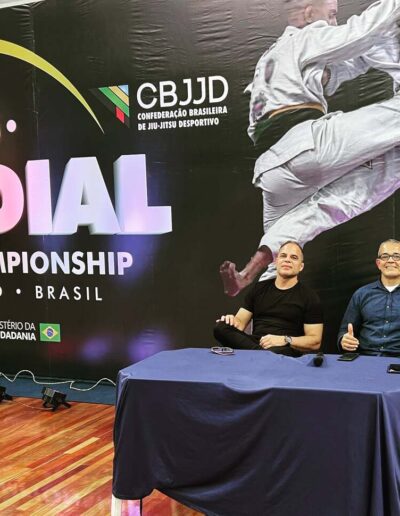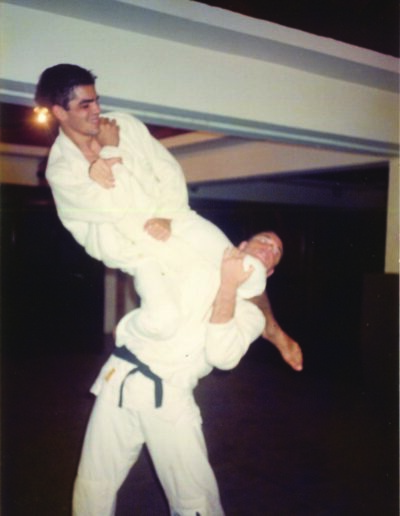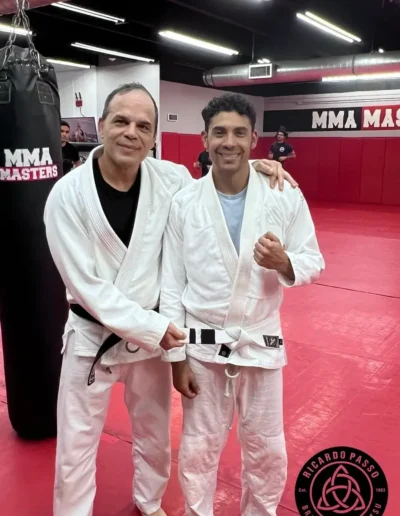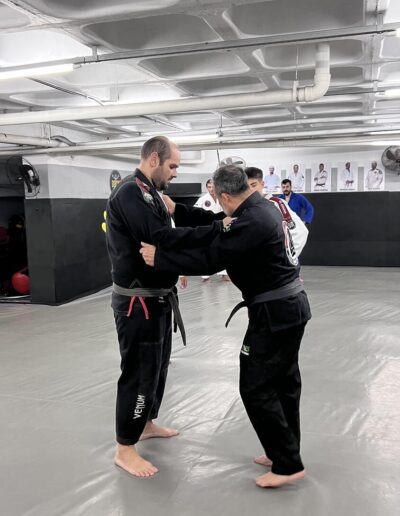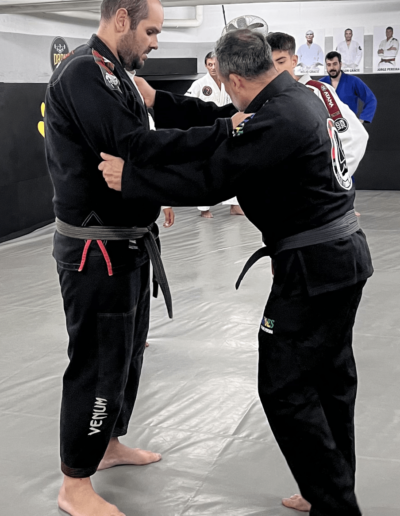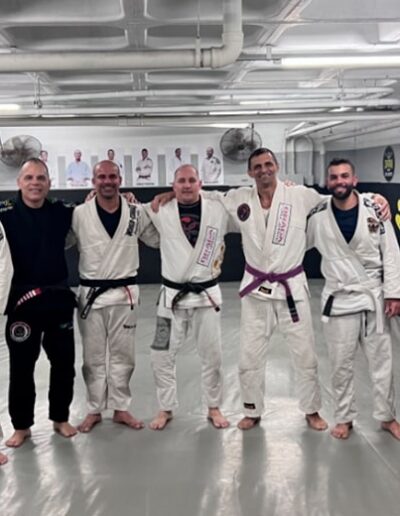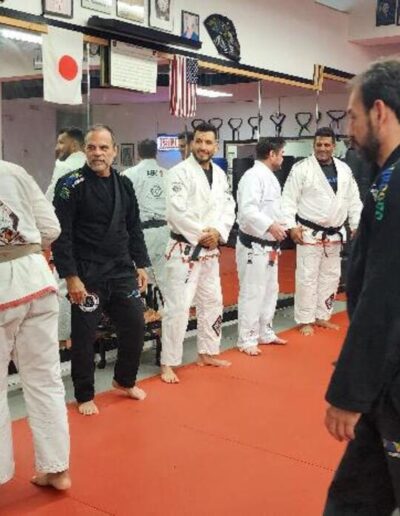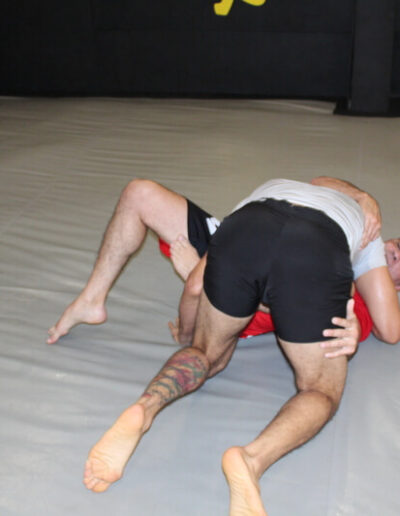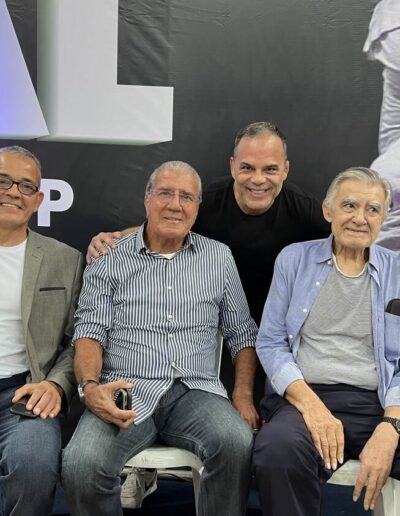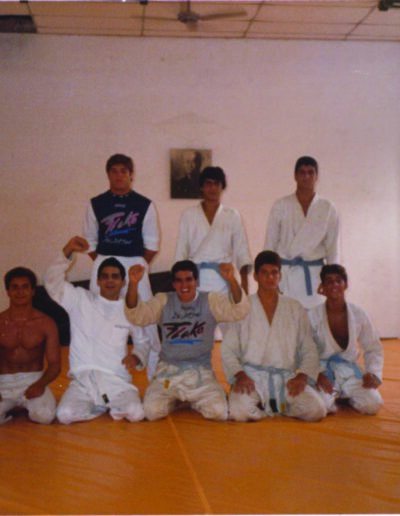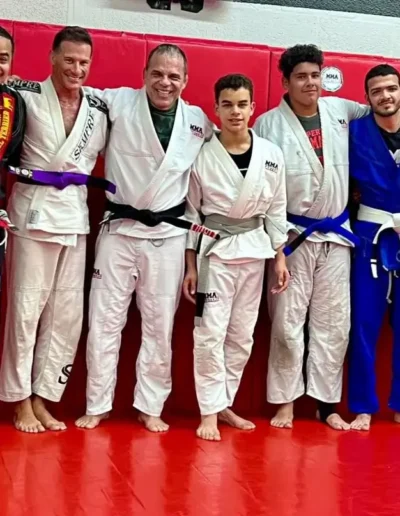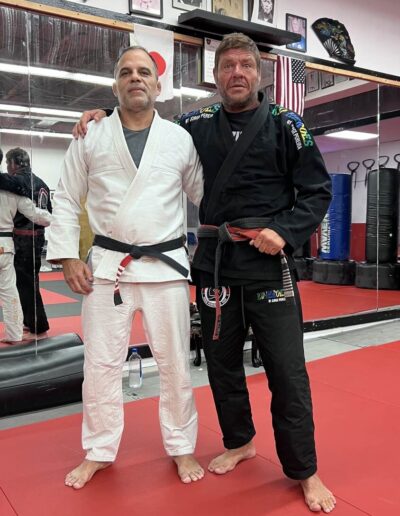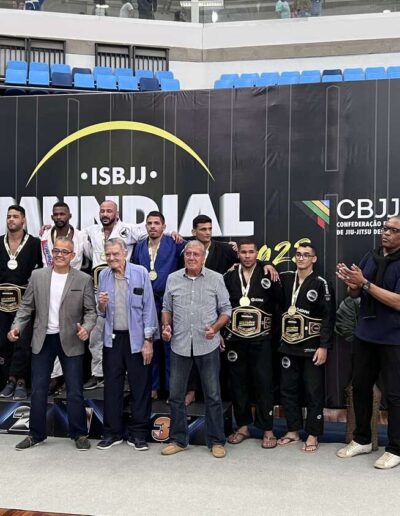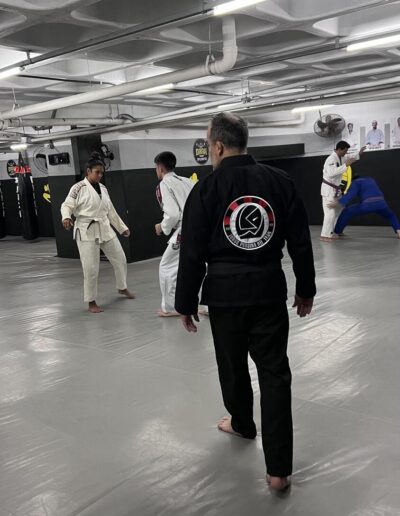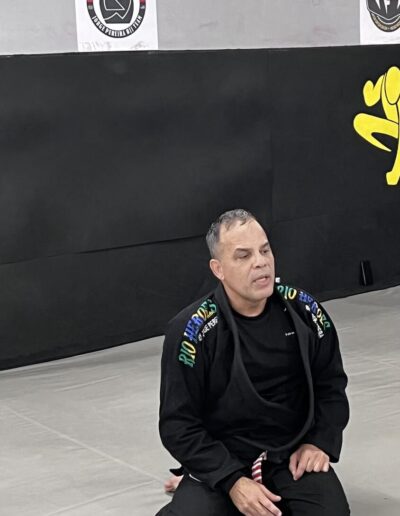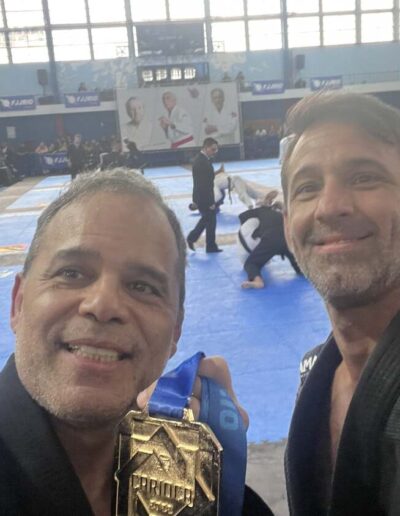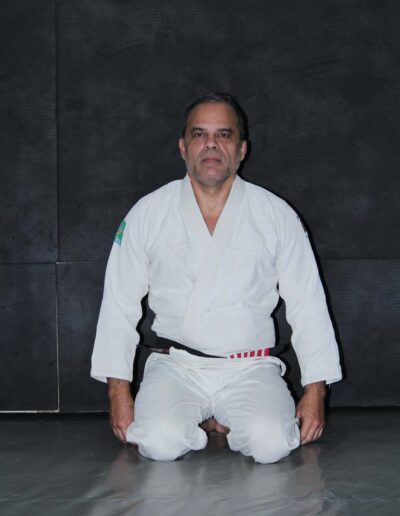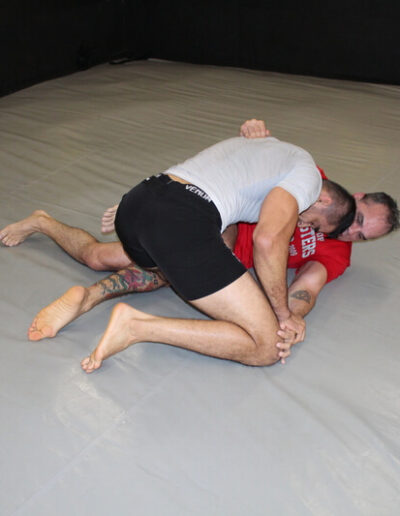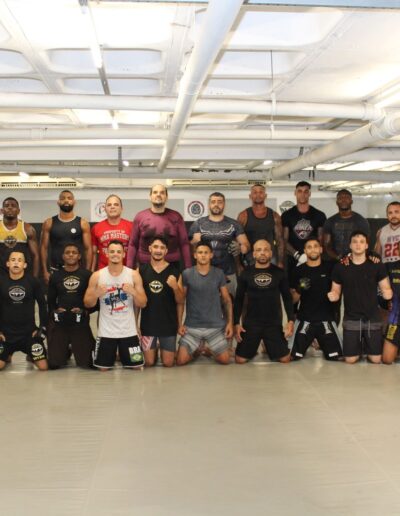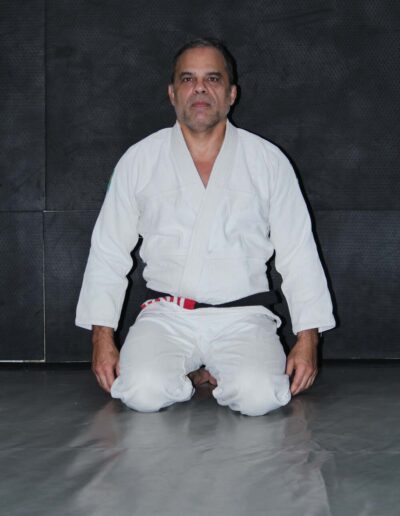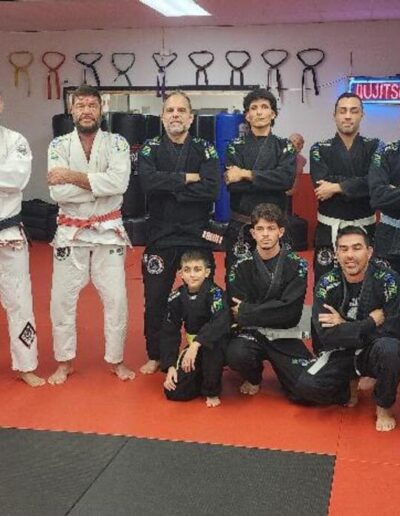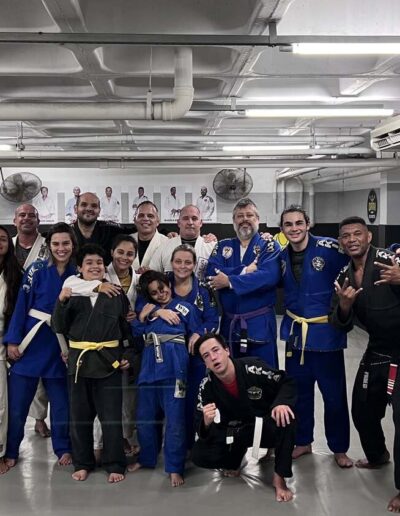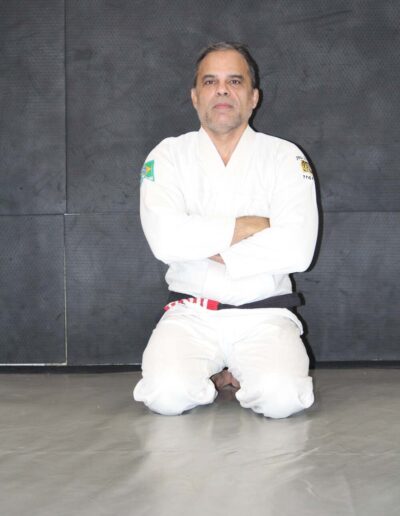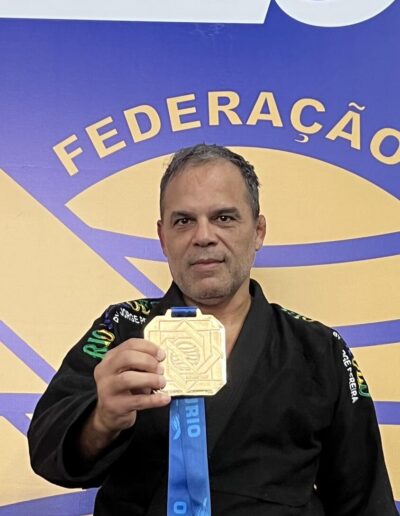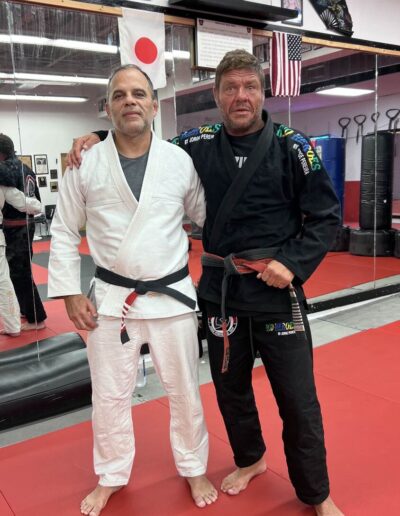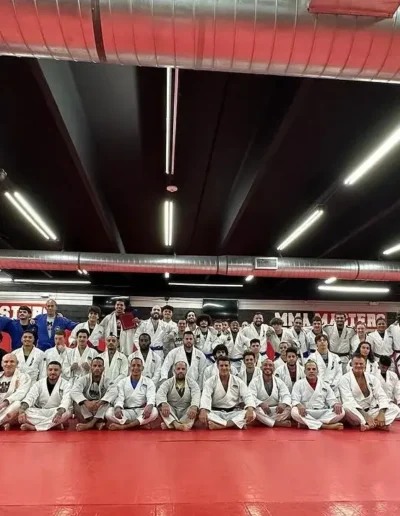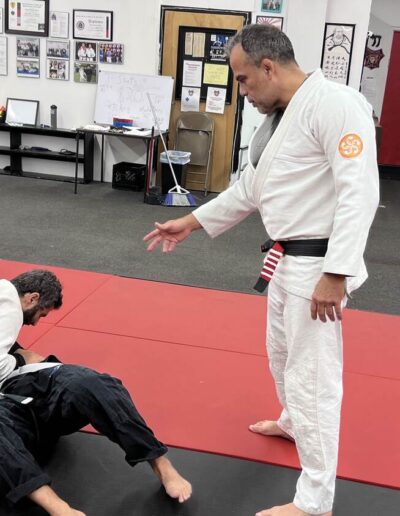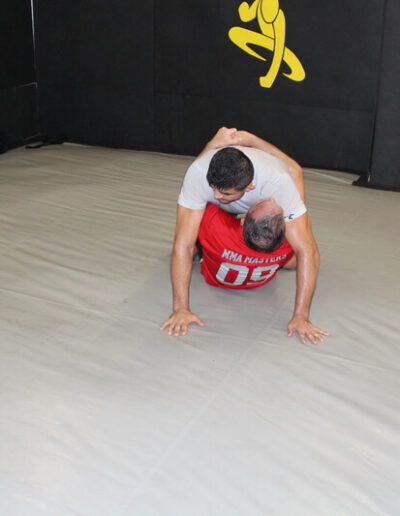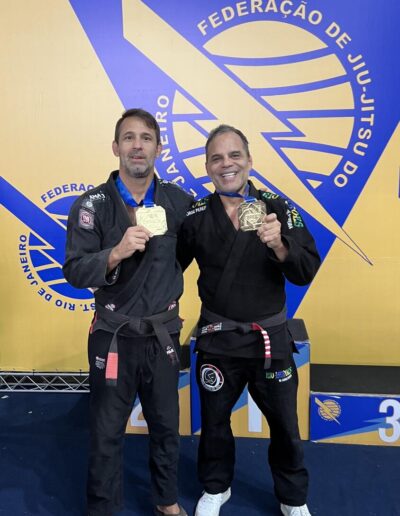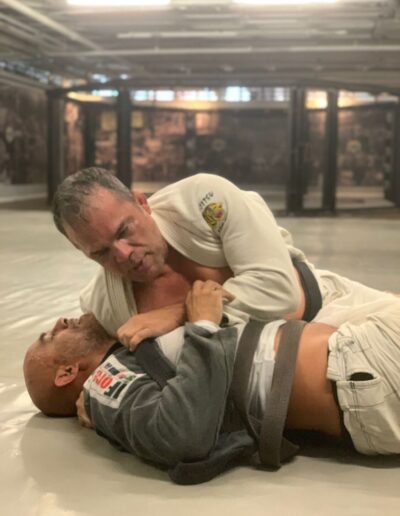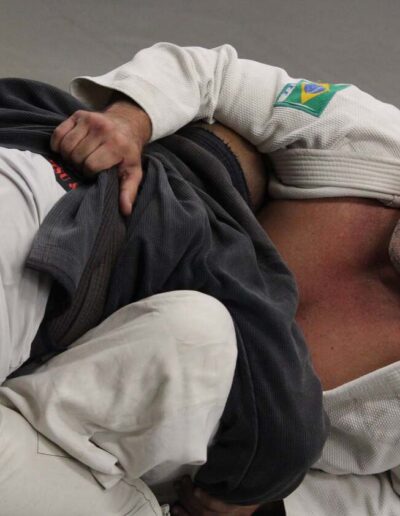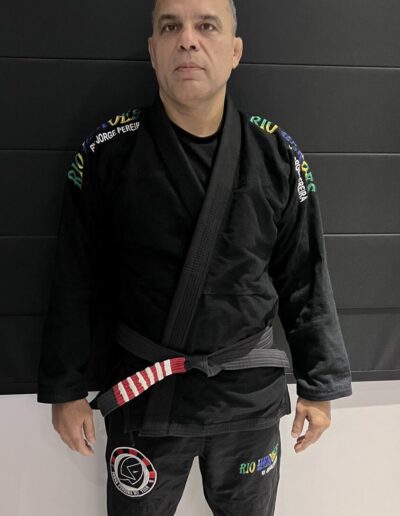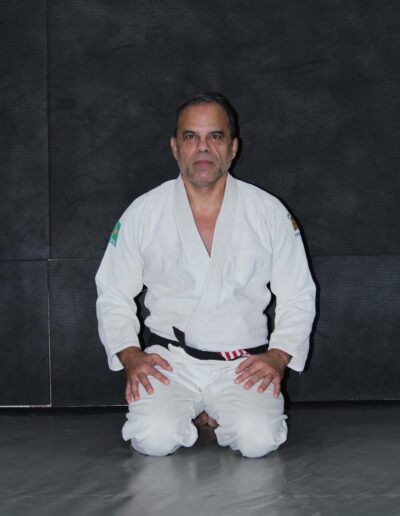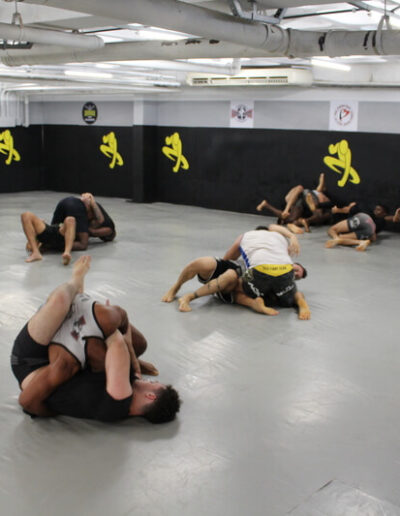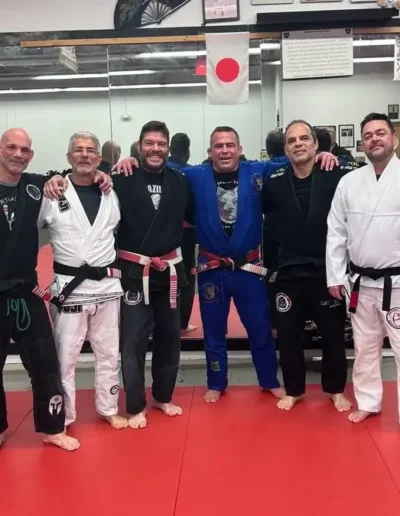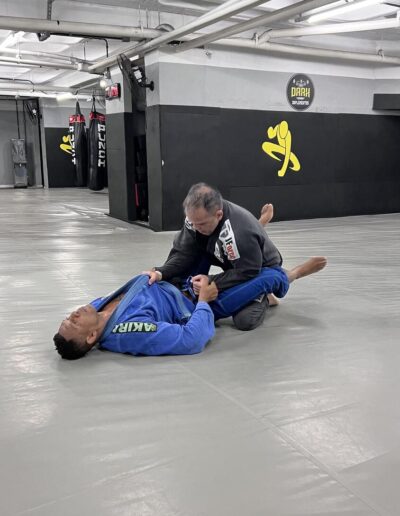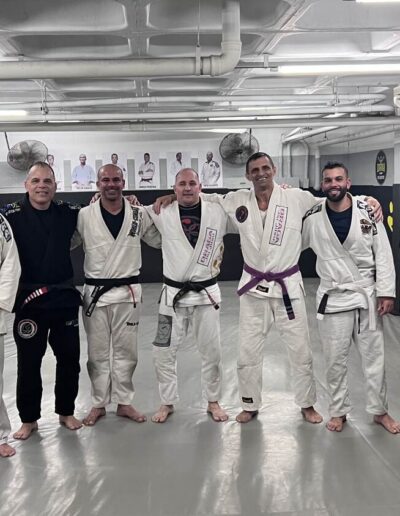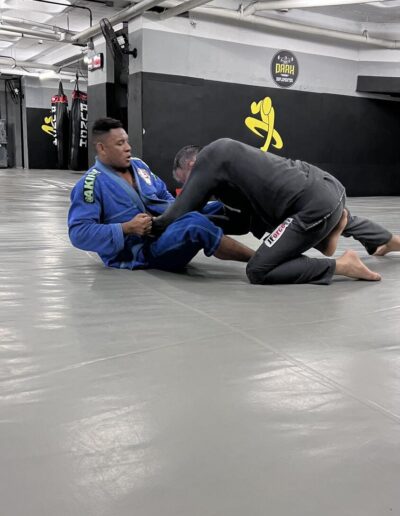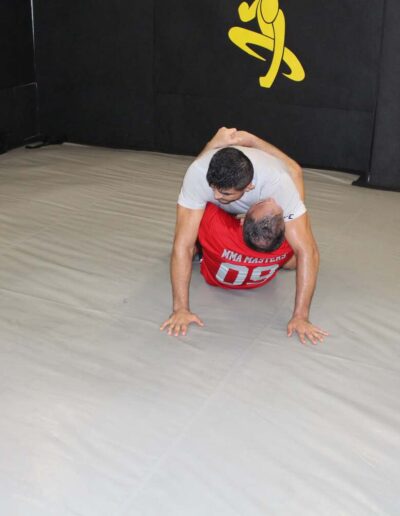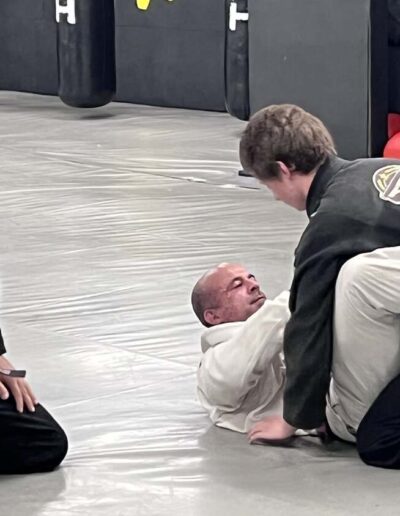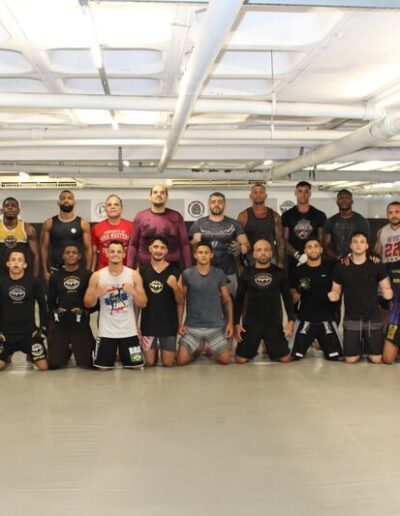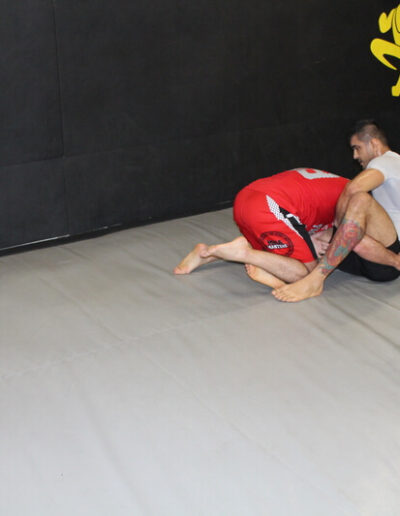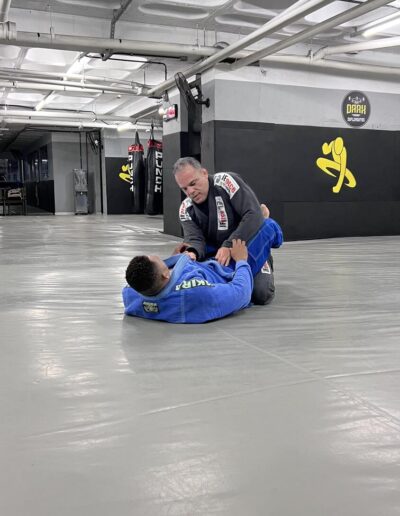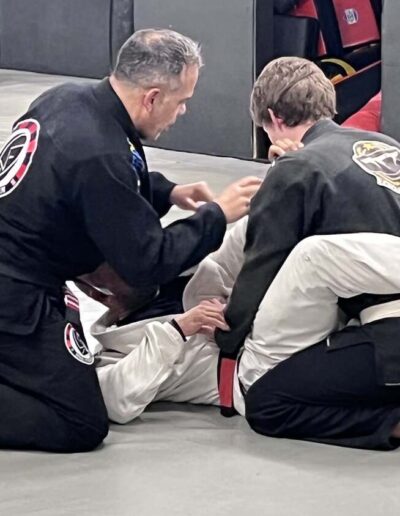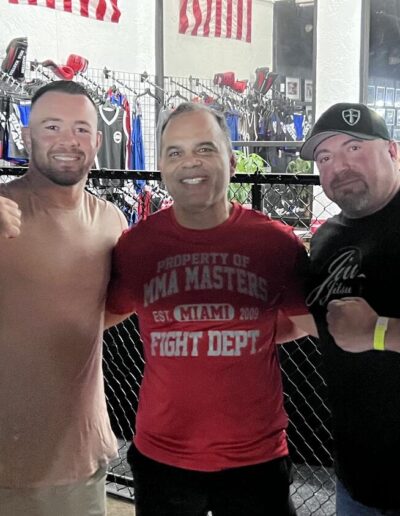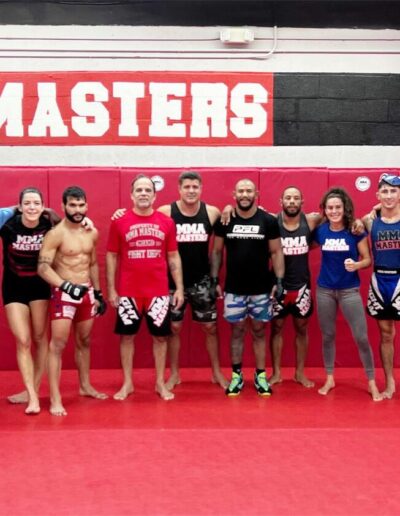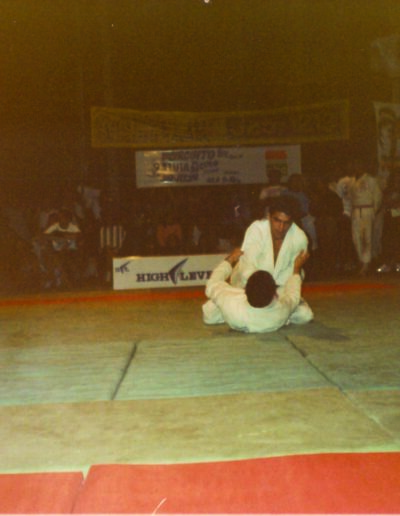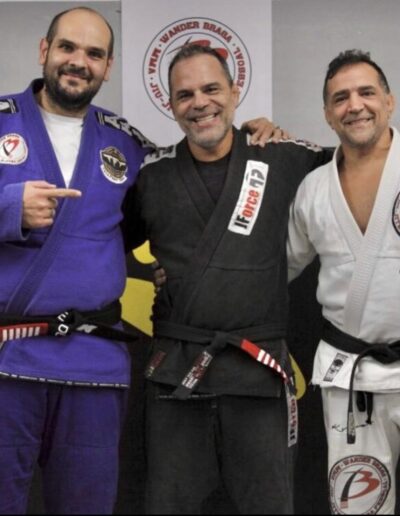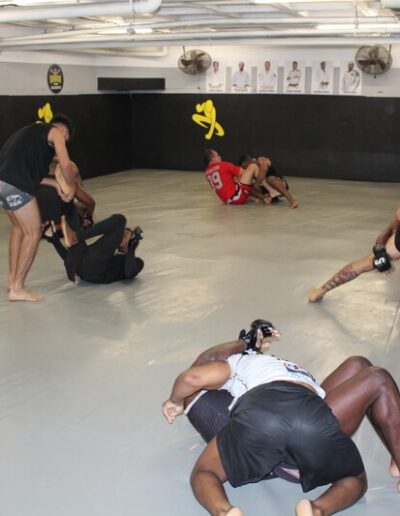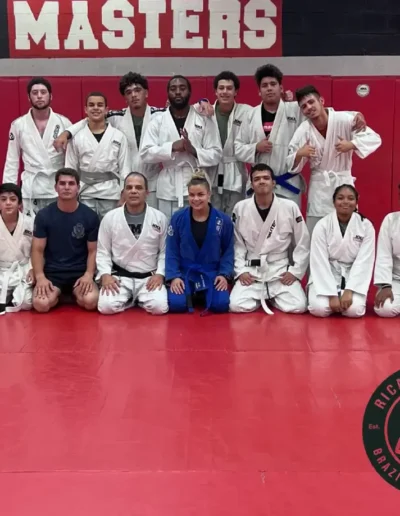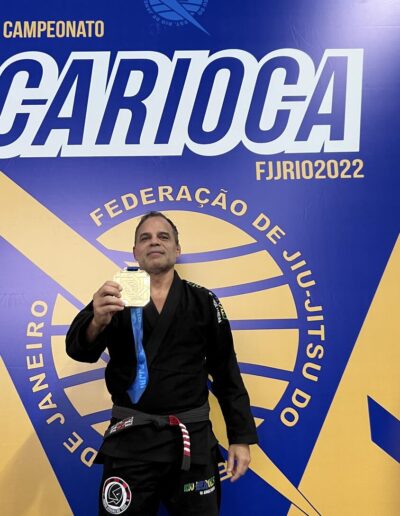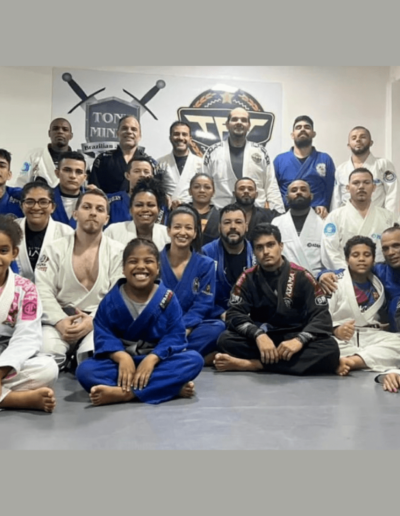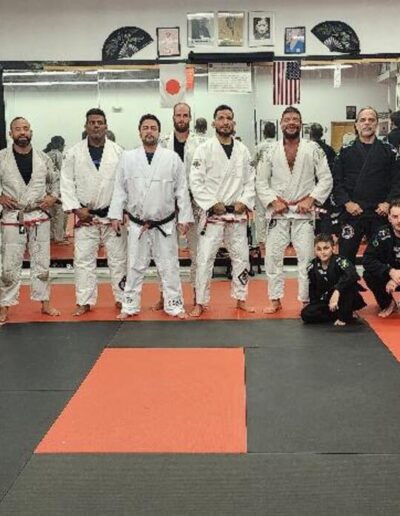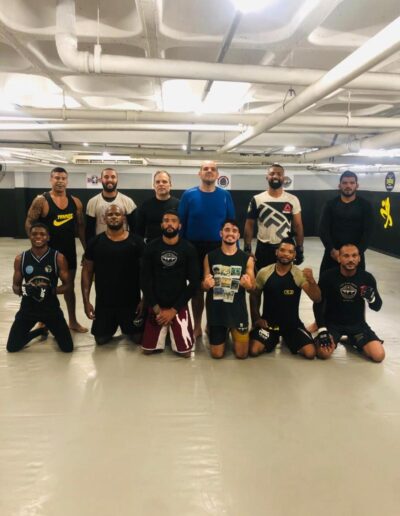Ricardo Passo
Jiu-Jitsu Teacher / 6th Degree Black Belt
THE ACADEMY
O professor Ricardo Passo, durante anos ministrou aulas de grupo e particulares nas academias do Mestre Jorge Pereira, TFT TEAM e WANDER BRAGA TEAM no Brasil.
Today he teaches group and individual classes at Millennium Martial Arts and OM Movement in Miami, USA.
Professor Ricardo Passo specializes in individual and specific training for each student, aiming at their goals and interests, understanding each student's needs, and setting goals together.
Each student has a different goal, so it's important to have a responsible and dedicated teacher to achieve their individual goals.
There are students who just want to learn self-defense, others who want to gain confidence, some aim to be professional fighters, and others are competitors. Therefore, it is important to understand each individual goals and set targets to achieve the desired results.
BENEFITS OF JIU JITSU
FIGHT AGAINST STRESS AND ANXIETY
Jiu-Jitsu demands a lot of physical conditioning and strength from its practitioners.
Class ends up causing wear to the organism, releasing the pleasure hormone called dopamine. In this way, those who practice are more willing to face the daily routine, it raises their self-esteem and they feel much more motivated.
That's why Jiu-Jitsu is a great ally to fight stress and anxiety symptoms. These benefits can be achieved too by people diagnosed with depression, since it makes them feel more confident in themselves and more positive when they start taking classes.
SELF-DEFENSE
Like all martial arts, Jiu-Jitsu teaches self-defense. Men and women learn to defend themselves against attacks from people who might attack them, and that makes them feel a little safer.
Jiu-Jitsu is a martial art that uses technique much more than strength. Thus, its practitioners are able to defend themselves against people who have a weight and size greater than theirs.
DISCIPLINE
Like any other martial art, Jiu-Jitsu teaches its practitioners discipline. Thus, it helps to practice openness to dialogue, respect, a sense of humanity and humility. Many values are applied in training, such as resilience, how to think under pressure and the ability to overcome themselves.
It takes persistence to learn the moves and to overcome goals and objectives. All of this is reflected in learning discipline for Jiu-Jitsu practitioners.
BODY DEFINITION
One of the main attractions of physical activities is the transformation that the practitioner's body goes through. And this is no different with Jiu-Jitsu. Even though it doesn't require as much strength to be practiced, it is a perfect modality to define the body.
These are because, some strokes and positions, require the movement of several muscle groups. Also, maintaining the positions helps in toning the body.
PHILOSOPHY
The philosophy of Jiu-Jitsu is based on intelligence, patience and discipline. It is necessary to learn, first of all, which are its three main pillars, to then “take action” and learn the movements.
The three pillars of Jiu-Jitsu are: the base, the legs and knees, which provide the fighter with balance and support; posture, governed by the head; and control, which requires observation and learning of techniques of domination and immobilization.
By learning and exercising each of the three pillars, Jiu-Jitsu students learn to build a strong and dignified character. Learn that intelligence is essential in a fight and, also, realize that the opponent's strength can be used against him.
All of this is part of the Jiu-Jitsu philosophy and are important things to learn before facing an opponent. In this note, fighting also teaches patience and dedication, very important things for life and for the sport.
Jiu-Jitsu is a dynamic sport, an intelligent fight and a martial art that has a lot to teach with its philosophy. Also, it shows that anyone is capable of facing an opponent, no matter who they is.
All of these lessons can be carried over to life and actually teach people how to overcome their own personal battles on a daily basis.
Therefore, the philosophy of Jiu-Jitsu is very wise, and it's no wonder that it conquered an entire nation, and also the world.
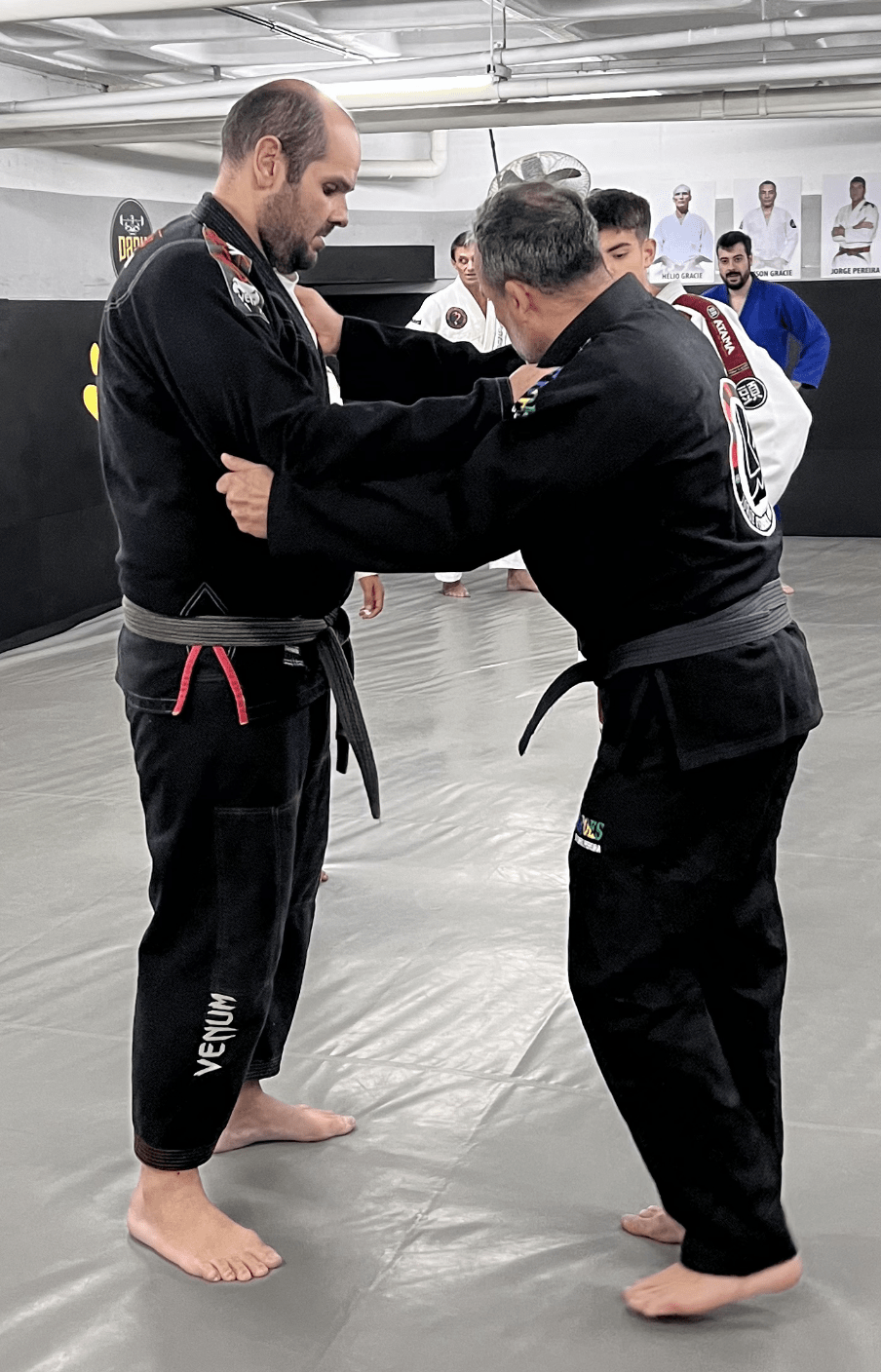
Professor Ricardo Passo
Ricardo Passo 6th degree black belt, formed by the master belt Coral Jorge Pereira. He started in martial arts at the age of 5 with the Judo modality and at the age of 13, he joined Thai Boxing, with master Marcos Ruas, at the Corpore São Conrado academy in Rio de Janeiro. In 1983, at the age of 14, he began his trajectory in Jiu-jitsu at Condominio Nova Ipanema with master Jorge Pereira. He started training and grew up with some Jiu-Jitsu icons at the time.
His dedication and commitment meant that in a short time, he became the first monitor at the Jorge Pereira academy, being responsible for teaching the team when Pereira was not present. He fought several championships and acquired several titles in the category and also in the absolute category (where there is no weight limit).
He was the first fighter to be part of the front line of the Jorge Pereira academy, facing several challenges from other martial arts within the academy itself. During these years he taught at several other academies, including: Clube Nova Ipanema, Colégio Anglo Americano (Nova Ipanema), Esplanada 1, Esplanada 2, Condomínio Village São Conrado, Academia Marathon, Academia Oficina do Corpo, Wander Braga BJJ, TFT Team.
He was responsible for training several fighters and teachers who stood out in the world of martial arts.
He received his black belt in 1998, from master Jorge Pereira, a Coral belt and creator of Rio Heroes.
In 2022, he received the Motion of Thanks, Praise and Recognition from the City Council of Rio de Janeiro for the work dedicated to Jiu-Jitsu in the state of Rio de Janeiro.
He is certified by the following federations: CBJJD (Confederação Brasileira de Jiu-Jitsu Desportivo), FJJRIO (Jiu-Jitsu Federation of the State of Rio de Janeiro), USFBJJ (United States Federation of Brazilian Jiu-Jitsu), IPJJF (International Professional Jiu-Jitsu Federation) , JJGF (Global Jiu-Jitsu Federation), IBJJF (International Brazilian Jiu-Jitsu Federation).
Dynasty: Mitsuyo Maeda – Carlos Gracie – Helio Gracie – Rickson Gracie – Jorge Pereira – Ricardo Passo
TESTIMONIALS
“Ricardo Passo was one of my teachers in the beginning of Jiu-Jitsu. I learned a lot from him and I am eternally grateful for his teachings. A true talent.”
Wander Braga – Founder of Braga Jiu-Jitsu
6th Degree Black Belt
“He was one of my first black belts. It was my first Right Arm in the Jiu-Jitsu world. He was very important in who I am today. I have a lot of affection and admiration.”
Jorge Pereira – Creator of Rio Heroes
8th Grade Choir Belt
THE HISTORY OF JIU-JITSU IN BRAZIL
Around 1904, Jiu-Jitsu gained new directions through Mitsuyo Maeda (1878-1941), also known as Conde Koma, instructor of the traditional Japanese school Kodokan, who went on a tour around the world alongside other teachers from Jigoro Kano's school to spread self-defense techniques.
After passing through the United States, United Kingdom, Belgium, Spain, France, Mexico and Cuba, in addition to presentations and challenges across America in countries such as Costa Rica, El Salvador, Honduras, Panama, Colombia, Ecuador, Peru, Chile and Argentina, in July 1914 Conde Koma arrived in Brazil.
After touring the country, he settled in Belém do Pará.
In Brazil, the slight Japanese, just 1.64 m and 68 kg, became friends with Gastão Gracie, an influential businessman in Belém, who helped him establish himself in the country.
As gratitude, Conde Koma taught traditional Japanese Jiu-Jitsu to Carlos Gracie, Gastão's eldest son.
Carlos Gracie (1902–1994) was enchanted by the art when he first saw a performance by the Japanese, where he demonstrated his ability to dominate and submit the giants of the region.
In Maeda's classes, in addition to Carlos, other Brazilians also learned the techniques and concepts of the gentle art, such as Luiz França, who later trained master Oswaldo Fadda.
Among so many pioneers, the youngest of the Gracie brothers, Hélio Gracie, was a fundamental figure in the dissemination of the art. Skinny, he was forbidden by his brother to train and just watched the classes. Hélio realized that he could adapt the techniques used until then, creating his own fighting style, based on his own physical limitations. Hélio began to modify what he observed in his brother's teachings and with determination to efficiently execute the blows, modifying them and adapting them to his fragile physical structure.
One day, when his brother was late for a class, Hélio started training and soon proved that he could also practice the modality. His courage, skill and technical innovations, modifying and adapting moves, soon led to his promotion as an instructor at the academy.
Over the years, the challenges made to other arts increased and the brothers accumulated victories and highlights in the main newspapers of the time. Famous students also helped to increase the fame of the family and Jiu-jitsu.
The gentle art developed and grew, including the creation, in 1967, of the Jiu-Jitsu Federation of Guanabara, in Rio de Janeiro.
FAQ
Do you still have doubts if the mat is your place? Check below some of the most frequently asked questions by new practitioners
WHAT IS BRAZILIAN JIU JITSU (BJJ)?
It is a martial art derived from Judo founded by the Gracie family, with emphasis on ground fighting with the aim of applying a choke or lock on some joint, without traumatic blows. Currently the vast majority of schools are dedicated to sports competitions, but Jiu-Jitsu also has a complete system of self-defense, which is usually worked together with the sports section. Jiu-jitsu focuses on grappling and ground fighting, with the aim of gaining an advantageous position that forces the attacker to 'submit' or give up. In addition, jiu-jitsu training is an aerobic and anaerobic exercise, which works your metabolism intensely, which will improve your health and conditioning, including flexibility, strength, cardiovascular conditioning, muscular endurance and fat burning ability.
DO I NEED TO BE STRONG, FLEXIBLE AND FIT TO START BJJ?
No. You don't need to be strong, flexible, or particularly well-conditioned to get started in jiu-jitsu. By starting jiu-jitsu training, you will certainly improve your strength, flexibility and conditioning (as well as balance, coordination and more), but it is not necessary to have these characteristics to begin with.
WHO CAN / SHOULD DO BJJ?
Our Brazilian jiu-jitsu is for everyone – regardless of gender or age. Brazilian jiu-jitsu was originally formulated for use by smaller and weaker people, allowing them to defend against bigger and stronger attacks. In this way, jiu-jitsu is perfectly suited for women, children, youth and seniors. Anyone can, should participate!
WHAT IS A GI?
A GI (also called Kimono) is the uniform normally used in jiu-jitsu training. It consists of 3 pieces: a jacket, pants and range. The material from which the three pieces are made is specially reinforced to withstand the rigors of daily practice.
WHAT SHOULD I WEAR FOR THE TRAINING PRACTICE?
You will usually wear a Kimono or the No Gi suit (no kimono – the kimono is known as a Gi) to train. If you are taking the trial classes, you can wear any comfortable clothing or borrow appropriate attire. A kimono consists of a cotton jacket, reinforced cotton pants (sometimes with polyester and rip-stop fabric. It was adapted by Jigoro Kano, the creator of Judo, from the uniforms used in Karate. When wearing the kimono, you and your opponent will have more places to hold and use against each other. We also practice and compete (for those interested in competition) without the GI. This is called No Gi Jiu-Jitsu (or No Gi Jiu-Jitsu) or Submission Grappling Nogi's attire consists of combat shorts and a 'Rash guard' – (second skin).
WHAT ARE THE GRADUATIONS OF JIU-JITSU?
There are five belts in Jiu-Jitsu, like almost every martial art, you start with a white belt, then we have blue, purple, brown and black. There are also children's tracks for people under 16: gray, yellow, orange and green. Often, schools award four degrees for white to brown belts. Black belts normally receive a degree every three years up to the 3rd degree then every 5 years up to the 6th degree. There are special rankings for black belt fighters and instructors. Instructors have black belts with red belts and black belt fighters have white belts. Normally, Black Belt Instructors are not allowed to promote others to the Black Belt level until they receive their first degree. Ratings for children are different. Blue belt and higher grades have age requirements for children to have the following grades starting with White, Yellow, Orange and Green. Each belt has 4 stripes. These tracks are used up to age 16.
JIU-JITSU DEGREE SYSTEM?
Every Jiu-Jitsu belt has a stripe at one end, this part is the place for placing the degrees. Those “bandages” you see on practically every Jiu-Jitsu fighter's belt. Up to brown belt there are 5 levels in each belt, the first level being the smooth belt with no grade. Then each level, or grade, is represented by 1 “bandage”. There can be up to 4 grades in each belt and the placement of them is the responsibility of each teacher, according to the student's performance. You don't necessarily need to have all 4 degrees to change belts. The exchange is made according to the criteria of each teacher.
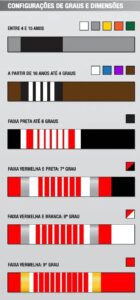
The black belt itself is divided into 7 levels, the flat black belt and another 6 degrees. The red and black band itself represents the seventh degree. In Jiu-Jitsu black belt, the red and white belt itself represents the eighth degree, and the red belt represents the ninth and tenth degrees. A Jiu-Jitsu practitioner can reach up to the ninth degree red belt, as the tenth degree is reserved only for Jiu-Jitsu pioneers.
As previously mentioned, up to the brown belt, the grades are given according to the teacher's criteria and, from the black belt onwards, it is mandatory to use the criteria of the Brazilian Jiu-Jitsu Confederation. The IBJJF still provides a graduation system for receiving degrees for athletes up to 16 years old, for receiving monthly, quarterly and even four-monthly degrees, but it is confusing and is still little used until today.
HOW IS THE JIU JITSU CLASS? IS IT WORTH THE PAIN?
It always starts with stretching / warming up for approximately 30 to 40 minutes, doing different aerobic exercises and educational exercises for the fight. Then we do another 30 minutes of technical part and finally, we go to the practical part: fighting.
Kicks and punches are not allowed in jiu jitsu. The idea of the sport is to make a personal defense, dominating and controlling the opponent.
WHAT IS THE RISK OF INJURING MYSELF IN JIU-JITSU?
Safety at our gym is paramount, although accidents can happen, as with any other activity. In jiu-jitsu, injury usually happens due to the practitioner's own negligence in executing the technique, but our instructors' attention to each student's movement makes this extremely rare, making jiu-jitsu a very safe sport.
HOW LONG CAN I GET THE BLACK BELT?
Normally, it takes 8 to 16 years to reach the rank of Black Belt in Jiu-Jitsu.
A black belt, in the end, comes by pure merit of the practitioner. There is, of course, a wide variation in assessment between the various Jiu-Jitsu schools around the world, but teachers have similar criteria as a basis for grading a pupil, such as: loyalty; attendance; specific technical knowledge for the belt; domain of self-defense; way of behaving inside the academy; personal hygiene; honor the name of the academy and Jiu-Jitsu; be a good citizen, etc. These criteria adopted by the professor are of paramount importance, after all, whoever receives a graduation, whatever it may be, indirectly carries the name of his master.
Therefore, as it is a maximum rank, a black belt should be an award that comes not only from meeting objective requirements, such as time or medals, but also from achieving some subjective requirements, which vary according to the academy. A black belt, above all, should be an example to be followed, hence the great responsibility of those who promote a graduation, whatever it may be – after all, even a white belt is, with each degree achieved, closer and closer to become a black belt.
